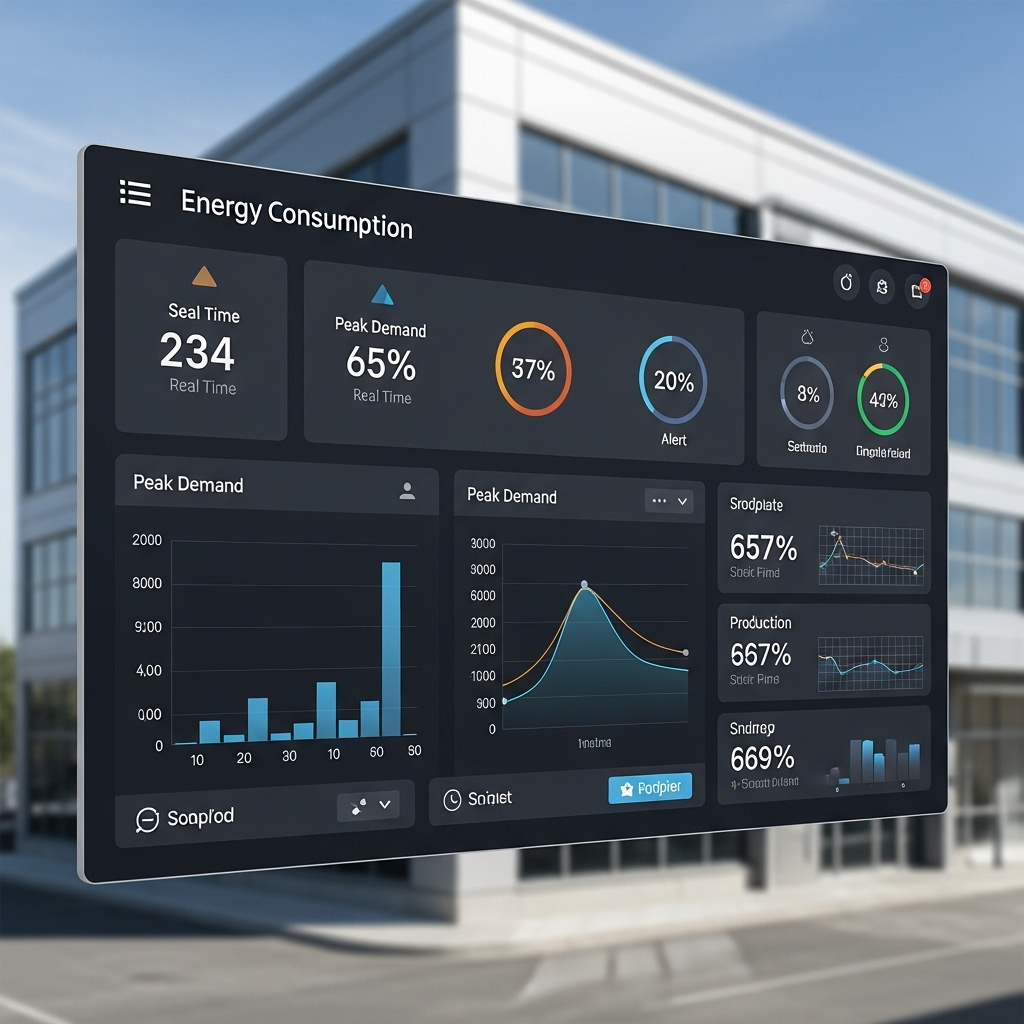The Corporate Sustainability Reporting Directive (CSRD) is reshaping how companies report on their environmental impact. Vague estimates and annual utility bills are no longer sufficient. Regulators and stakeholders now demand granular, verifiable data on energy consumption. This presents a challenge, but also an opportunity. By building an automated energy data pipeline, you can not only meet compliance demands but also unlock significant operational insights. This process shows how the OpenADR standard is a key component in creating a robust, future-proof data infrastructure.
Why Your Energy Data Strategy is Crucial for CSRD Compliance
Meeting new reporting standards starts with a solid data foundation. Without an automated way to collect and process energy information, CSRD compliance can become a significant administrative burden, prone to inaccuracies.
Understanding CSRD's Energy Reporting Demands
CSRD requires detailed disclosure of environmental, social, and governance (ESG) metrics. For energy, this specifically targets Scope 2 emissions—the indirect greenhouse gases generated from purchased electricity, heating, and cooling. According to the IEA's Energy and AI report, the directive mandates that large and listed companies report these emissions, making accurate electricity consumption data non-negotiable. This means you need a system that can track energy use from various sources across your facilities in near real-time, providing auditable records for your sustainability reports.
The Limitations of Manual Data Collection
Relying on manual methods, such as transcribing data from monthly utility bills, is inefficient and risky. This approach is susceptible to human error, creating data that is difficult to verify. It also provides a delayed, low-resolution picture of your energy profile, missing the daily or hourly fluctuations that reveal true consumption patterns. For dynamic assets like solar arrays or energy storage systems, manual tracking is nearly impossible. Automation is the only scalable way to achieve the accuracy and granularity CSRD requires.
OpenADR: The Backbone of Your Automated Data Pipeline
To automate data collection effectively, you need a common language for your energy devices to speak. OpenADR provides this standardized communication protocol, making it a cornerstone of a modern energy data pipeline.
What is OpenADR?
OpenADR, or Open Automated Demand Response, is a secure, open-source communication standard for energy management. While its name highlights its use in demand response programs, its capabilities extend far beyond. It enables two-way information exchange between energy providers (or aggregators) and energy-using equipment at a facility. As noted in IRENA's Innovation Outlook: Smart charging for electric vehicles, OpenADR is a key protocol in the communication chain for managing smart energy assets, alongside other standards like OCPP. This established role makes it a reliable choice for building a data pipeline.
OpenADR vs. Other Standards like Green Button
While both OpenADR and Green Button promote energy data access, they serve different primary functions. Green Button is excellent for providing consumers and businesses with access to their historical energy usage data in a standardized format. It empowers users to download bulk data for analysis. OpenADR, on the other hand, is designed for secure, automated, and near real-time communication. This makes it ideal for the dynamic data exchange needed for continuous monitoring and reporting.
| Feature | OpenADR | Green Button |
|---|---|---|
| Primary Function | Automated, two-way communication for control and reporting | Standardized access to historical energy usage data |
| Communication Type | Near real-time, event-driven | Bulk data download, often with a delay |
| Use Case for CSRD | Building an automated, continuous data pipeline for live monitoring and reporting | Providing historical data for baseline analysis and annual summaries |
| Direction | Bi-directional (sends signals, receives data) | Primarily uni-directional (data access for the customer) |
Steps to Build Your CSRD-Ready Pipeline
Constructing an energy data pipeline involves a methodical process of auditing your assets, implementing the right technology, and configuring the data flow.
Step 1: Audit Your Energy Assets and Data Points
Begin by inventorying all significant energy-consuming and -producing assets. This includes HVAC systems, lighting, machinery, solar panel arrays, energy storage systems (ESS), and EV charging stations. Identify what data you need to capture from each asset. Do your current meters and sensors support automated data extraction? If not, you may need to plan for upgrades to 'smart' devices that can communicate their status and consumption.
Step 2: Implement OpenADR-Compliant Hardware and Software
The core of your pipeline is an OpenADR client, known as a Virtual End Node (VEN). A VEN can be a standalone gateway device or software integrated directly into your facility's Energy Management System (EMS). Many modern commercial inverters and energy storage solutions are now built with OpenADR certification, simplifying integration. Adopting technology built on recognized protocols is crucial. This aligns with guidance from organizations like IRENA, which, in its report on Quality infrastructure for smart mini-grids, advocates for adopting international standards to ensure interoperability and reliability in energy systems.
Step 3: Configure the Data Flow and Storage
Once the hardware is in place, configure it to automatically poll data from your assets. This data—including energy consumption (kWh), power demand (kW), and timestamps—should be sent to a central database. This creates a single source of truth for all your energy-related activities. The International Energy Agency reinforces this concept, stating that structured data foundations are essential for the efficient and reliable operation of modern power systems. Your structured database becomes the verifiable backbone of your CSRD reports.
Beyond Compliance: Unlocking Additional Value
A well-built energy data pipeline does more than just satisfy reporting requirements. It becomes a powerful tool for improving your business's financial and operational performance.
Enhancing Operational Efficiency
With a constant stream of granular energy data, you can move from reactive to proactive energy management. The data will reveal hidden inefficiencies, such as equipment running after hours or systems with unusually high consumption. These insights allow you to optimize operational schedules, reduce energy waste, and lower overall utility costs.
Optimizing Solar and Storage Performance
For facilities with on-site generation and storage, a data pipeline is invaluable. It allows you to precisely track your solar production, battery charge/discharge cycles, and overall system efficiency. You can verify that your assets are delivering the expected return on investment. To gauge your system's effectiveness, you can compare its output against established metrics, a topic covered in this ultimate reference for solar and storage performance, which helps you translate raw data into performance insights.
Participating in Demand Response Programs
Since the pipeline is built with OpenADR, you are automatically prepared to participate in demand response (DR) programs. Utilities and grid operators offer financial incentives to businesses that can temporarily reduce their electricity consumption during periods of high grid stress. Your OpenADR-enabled system can receive these signals and automate the response, turning your energy assets into a source of revenue.
Final Thoughts on Future-Proofing Your Energy Strategy
The push for greater corporate transparency under CSRD is accelerating the need for sophisticated energy management. Building an automated data pipeline using a standard like OpenADR is a strategic response. It transforms a compliance obligation into a competitive advantage. This investment provides the data needed for accurate reporting while simultaneously unlocking new opportunities for efficiency, cost savings, and revenue generation, positioning your organization as a leader in sustainable operations.
Frequently Asked Questions
What is the difference between OpenADR and Green Button for CSRD reporting?
Green Button is ideal for accessing and downloading historical energy data, which is useful for establishing a baseline or for annual analysis. OpenADR is designed for automated, near real-time, two-way communication. For ongoing CSRD reporting that requires continuous and auditable data, an OpenADR-based pipeline is more effective because it automates the collection process.
Do I need new hardware to implement OpenADR?
It depends on your existing infrastructure. Many modern Energy Management Systems (EMS), solar inverters, and commercial energy storage systems come with OpenADR certification built-in. If your current systems are older, you may need to install an OpenADR gateway, which acts as a translator between your equipment and the data network.
Can this data pipeline be used for other ESG reporting frameworks?
Absolutely. While this setup is framed for CSRD, the granular and verifiable energy data it generates is valuable for virtually any ESG reporting framework, including GRI, SASB, or TCFD. A robust data pipeline provides a single source of truth that can be adapted to meet various reporting needs, improving consistency and reducing administrative effort across the board.





Leave a comment
All comments are moderated before being published.
This site is protected by hCaptcha and the hCaptcha Privacy Policy and Terms of Service apply.